Scotland feels effect of ‘weather bomb’ storm
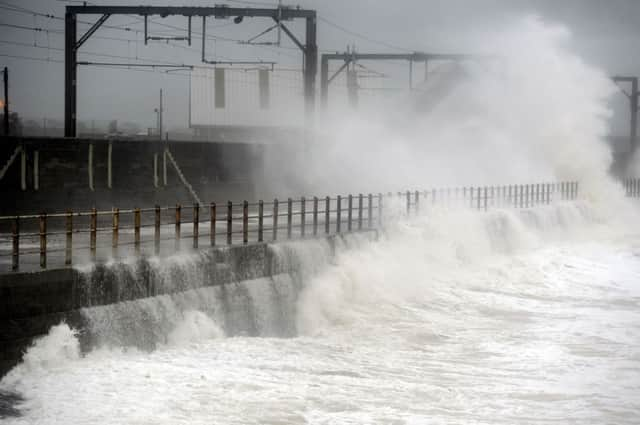

The National Trust last night reported that on St Kilda a wind speed of 144mph was recorded – one of the highest ever recorded – with gusts in excess of 80mph elsewhere.
Waves of 52ft were recorded by the Met Office off the Outer Hebrides during yesterday’s stormy weather – beating those in 2011 and 2012 when waves of 48.22ft and 46.90ft were recorded.
Advertisement
Hide AdAdvertisement
Hide AdHundreds of engineers struggled to return power to more than 27,000 households across the Highlands, Shetland and the Western Isles as an amber “be prepared” weather warning was put in place.
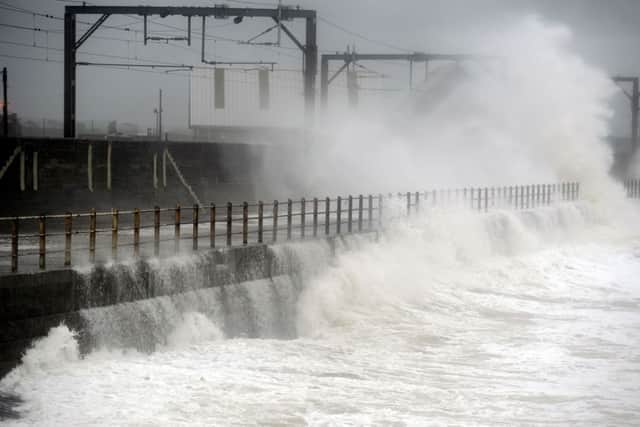

Lesser yellow alerts covered the rest of the country, with forecasters predicting conditions would improve today.
The “weather bomb” – a meteorological process of rapid cyclogenesis caused by a deep low pressure system – which was moving between Iceland and Scotland yesterday sent waves of up to 40ft along the west coast.
In Shetland, the coastguard launched a rescue operation to help a Spanish fishing vessel in difficulties off Orkney The O Genita trawler, which was damaged by large waves off the coast of Westray, eventually reached safety at Pierowall on the island. None of the 16 crew is thought to have been injured.
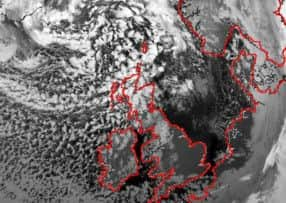

The Stornoway Coastguard described the sea state as “phenomenal” – a term they reserve for only the most extreme conditions.
CONNECT WITH THE SCOTSMAN
• Subscribe to our daily newsletter (requires registration) and get the latest news, sport and business headlines delivered to your inbox every morning
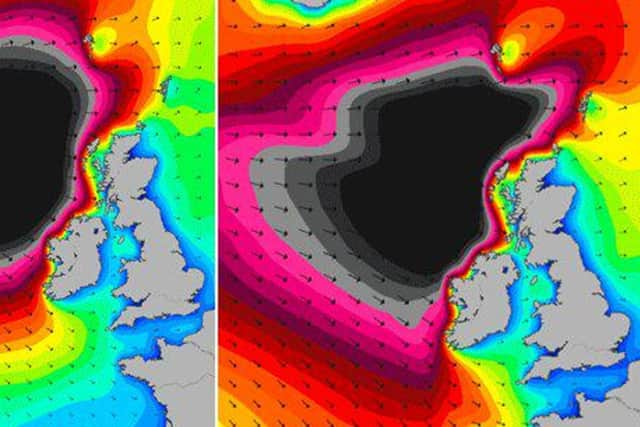

In Aberdeenshire, around 20 cars were freed after they were stuck in icy conditions at Cairn O’Mount, near Banchory.
Ferry services cancelled
A number of Caledonian MacBrayne ferry services and NorthLink services between Orkney, Shetland and the mainland, were cancelled or disrupted throughout the day.
Caledonian Sleeper among cancelled trains
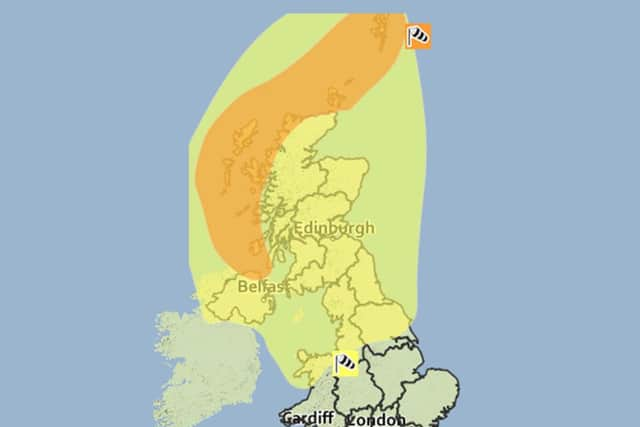

Advertisement
Hide AdAdvertisement
Hide AdNetwork Rail cancelled some services in more exposed areas, with no trains running between Inverness and Kyle of Lochalsh, Ayr and Stranraer and Glasgow and Mallaig, including the Caledonian sleeper.
Flood alerts
Fifteen flood warnings and 12 flood alerts were issued by the Scottish Environment Protection Agency (Sepa) across the country.
Close to 50 schools shut
Elsewhere, almost 50 schools and nurseries in the Highlands were closed, affecting more than 2,300 children.
Skye Bridge closed, others shut to high-sided vehicles
The Skye Bridge was closed for much of the day and the Forth Road Bridge, Tay Bridge and Erskine Bridge were all closed to high-sided vehicles.
Trees brought down
Trees were brought down in the Mount Florida area of Glasgow as the storm hit Scotland’s biggest city, causing traffic delays.
First Minister Nicola Sturgeon and her deputy, John Swinney, took part in a meeting of the Scottish Government’s emergency “resilience committee”, which was held to ensure a co-ordinated response by services.
Mr Swinney later said: “We’ve had some significant power outages in different parts of the country.
“Obviously there has been transport disruption, principally on the ferry network and also on some of the coastal rail services where it’s just been unsafe to run trains because of the dangers of the coastal flooding that could have taken place.”
Power restored to vast majority of 31,000 homes affected
Advertisement
Hide AdAdvertisement
Hide AdLast night, energy firm SSE said power had been restored to the vast majority of the 31,000 homes that had their supply cut.
The wind speed at Machrihanish on the Kintyre peninsula was recorded at 73mph, at Stornoway on Lewis it was 69mph, and in Oban 63mph.
Inspector Bryan McGeogh, from Police Scotland, said: “I would advise people to travel with caution across the country.”
Susan Bain, Western Isles manager for the National Trust for Scotland, which cares for St Kilda, said of the record winds: “St Kilda has gale force winds 75 days of the year, almost twice the amount on other islands in the Western Isles and Outer Hebrides. However, conditions today are even tougher than normal.
“Those on the island are staying indoors, while even the famous St Kilda sheep are seeking refuge in the cleits, St Kilda’s unique structures built for wind drying and now used by the sheep for shelter.”
WEATHER BOMBS EXPLAINED
Weather bombs are violent winds created by very rapidly falling pressure in a frontal depression.
The Met Office, which prefers the term explosive cyclogenesis, said such phenomena were significant for the speed of the pressure drop rather than their destructive power.
They occur where the barometer has fallen by 24 millibars in less than 24 hours.
Advertisement
Hide AdAdvertisement
Hide AdThe so-called Hurricane Bawbag, which hit Scotland three years ago yesterday, was among those given “bomb” status.
The storm triggered the Met Office’s first red weather warning, with 165mph winds over Cairn Gorm and 60,000 homes left without power, but it caused far less damage than had been feared.
In the United States, the Washington Post reported in February 2010 that a weather bomb had “exploded” over the east coast, with winds of up to 94mph and nearly 2ft of snow dumped on Central Park in New York, notching up a record monthly snowfall.
Meteorologist Cindy Day, of Canadian TV station CTV Atlantic, described an east coast storm in December 2011 as a “textbook weather bomb”.
Moving in from Cape Cod, it blanketed New Brunswick with 25cm (10in) of snow and drenched Nova Scotia with 70mm (28in) of rain, amid hurricane-force gusts.
However, some people have taken advantage of the extreme conditions created by such bombs.
Surfer Garrett McNamara broke a world record on a 111ft wave off Portugal caused by storm Jolle in January 2013, in which the pressure dropped by 58 millibars in 24 hours.
SCOTSMAN TABLET AND IPHONE APPS